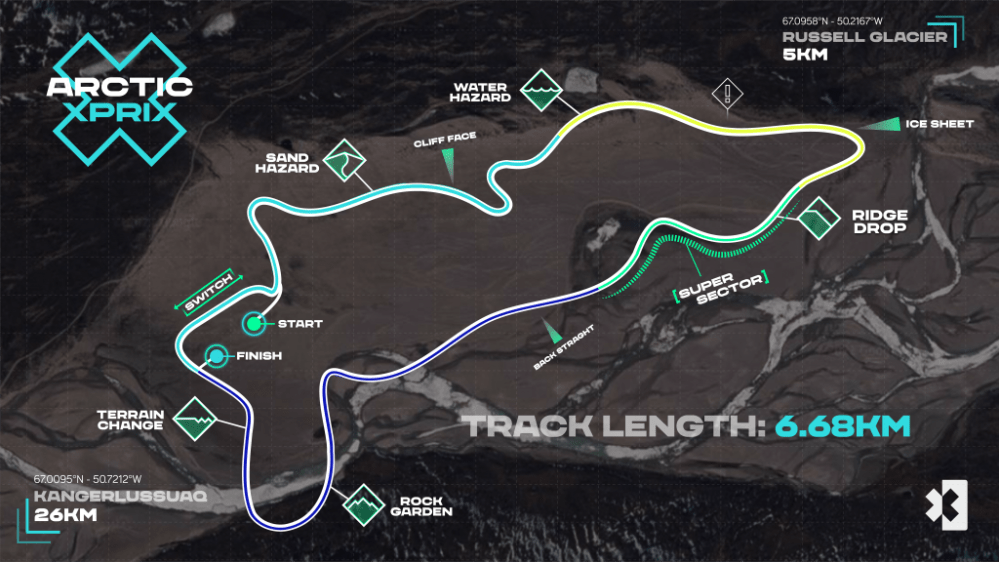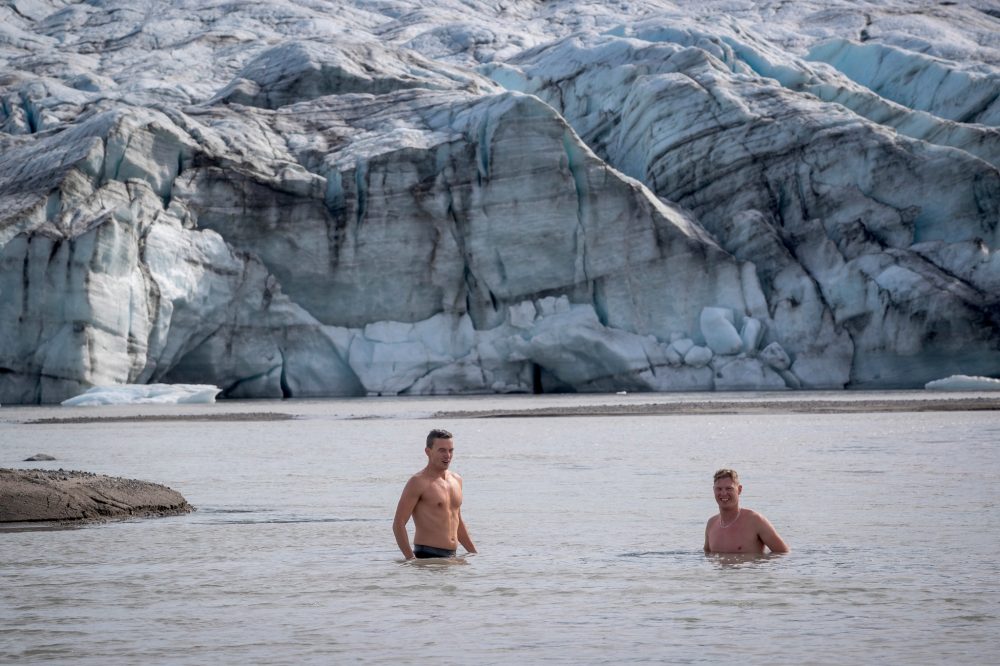
Electric off-road racing series Extreme E will race at Russell Glacier at the Arctic X Prix near Kangarlussuaq in Greenland this weekend, in the first motorsport event ever to be held in Greenland.
Each Extreme E venue is picked to bring awareness to one aspect of environmental damage humans are doing to the Earth. In the case of the Arctic X Prix, the focus is on ice melt leading to global sea level rise.
This will be Extreme E’s third race, after the Desert X Prix in Saudi Arabia and the Ocean X Prix in Senegal. Those races highlighted desertification, rising sea levels, and marine ecosystem degradation, all of which are caused by human activity.
In Senegal we saw a much improved race as compared to the inaugural Desert X Prix. In the first race in the desert, visibility was very low, which made it impossible for following cars to catch up after the first couple corners. The sand in Senegal was coarser than Saudi Arabia’s desert dust, which allowed for more exciting racing as following cars weren’t trapped in a dust cloud.
This time out we’ll be seeing wetter and even coarser terrain, driving over sand, rocks, dirt, and mud next to an icy-but-melting glacier. Rain is also forecast for Sunday, so conditions might be quite interesting.
The course features significant elevation change up and down large dunes, along with multiple trips across a large riverbed and some relatively wide-open sections with a wide variety of potential racing lines, which should give opportunities for passing. Finally, there is a “rock garden” section with medium- and large-sized rocks that will require a slower approach than the rest of the course.

The race doesn’t drive across the glacier itself, in the interest of not causing more damage to the already-melting ice.
Extreme E has continued to tweak the race format, with a complicated multi-race qualifying format that I won’t bother to explain because, frankly, it’s confusing and will probably change again before the next race anyway. The bottom line is that five of the nine teams will compete in the “final race,” as opposed to three- and four-car races from the previous Desert and Ocean X Prixs, which should make for some more exciting wheel-to-wheel racing in the finals.
Like many glaciers, Russell Glacier has shrunk over time due to climate change. While the course for this weekend’s race does not race on the glacier proper, it does race on land that was once covered by the glacier – but is not anymore, due to rising global temperatures.
In addition, unfrozen water on the glacier surface is becoming more common during summer months, and this melting releases trapped methane (from ancient bacteria), which leads to a feedback loop of climate change.

It’s estimated that the Greenland ice sheet, of which Russell Glacier is a part, loses 200 gigatons of ice per year. This is enough to fill 80 million Olympic-size swimming pools or the entirety of Lake Ontario, Lake Tahoe, and the Dead Sea – combined. And this melt is accelerating to levels that are in line with the worst-case models of climate change.
If Greenland’s ice sheet were to melt entirely, it has enough water to cause a 24-foot rise in global sea levels. This melt from Greenland alone would be enough to displace several hundred million people worldwide and destroy many coastal cities. And these melting issues are not exclusive to Greenland, but are happening in polar regions worldwide.
This is also the first race held since this month’s IPCC report release, which paints a more dire picture of climate change than we’ve ever had before. Due to continued human irresponsibility, a certain amount of glacier melt is already “locked in,” though there are still things we can do about it.

As with every race, Extreme E has set up a local “legacy program” to inspire positive change in solving the problems facing the race region. This time, they’ve partnered with UNICEF to develop educational resources to teach Greenland’s children about climate change during Climate Week in September of this year.
Since last time out, we’ve had a little Extreme E news as well: McLaren has signaled interest in joining the series in 2022, and two planned races, the Amazon and Glacier X Prix in Brazil and Argentina respectively, have been cancelled due to the COVID-19 situation in South America. The Island X Prix in Sardinia will replace one of those races in October, and the second race replacement in December is yet to be determined.
After two race wins in two races, Rosberg X Racing has a commanding lead in the championship and their driver team of Johan Kristofferson and Molly Taylor has proven very capable. They’re going to be hard to catch, though we wouldn’t count out Team X44, which has won both qualifying sessions so far (you really can’t count out Sebastian Loeb in any rally race). There are lots of points available each weekend, so it’s still anyone’s game.
All in all, after a somewhat disappointing Desert X Prix, the Ocean X Prix really proved that Extreme E will be an interesting series to watch. The racing got pretty wild on the beach, and with the addition of another car into the final race, we’re hoping to see even more madness in the Arctic. Tune in this weekend to see what happens.
The final race broadcasts on Sunday at 2 p.m. to 4 p.m. UTC (7 a.m. PDT, 10 a.m. EDT, 4 p.m. CEST) and will be streamed to some but not all territories. You can find out how to watch it on Extreme E’s website. In the US, Fox Sports 2 will carry qualifying and Fox Sports 1 will carry the final race, both delayed (check the listings for when sessions will air). The pre-weekend shakedown session will be streamed on Extreme E’s social media and can be watched here.
Subscribe to Electrek on YouTube for exclusive videos and subscribe to the podcast.
Author: Jameson Dow
Source: Electrek



